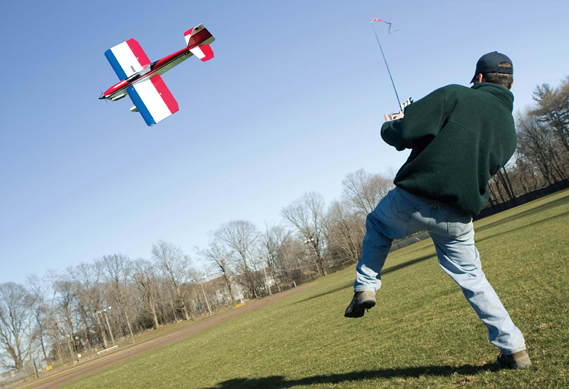
The wing of the airplane causes lift due to the airflow over the wing and angle of attack. As discussed in the previous article, a "Stall" occurs when the smooth airflow over the top of the wing is disrupted resulting in loss of lift. During a stall, the airplane falls out of the air due to loss of lift.
A tip stall occurs when the lift at the tip of the wing is lost before the rest of the wing. In this case, the wing tip stalls and no longer holds the wing up and the plane rolls. Most airplane ailerons are near the tip of the wing. When a tip stall occurs, the aileron on the stalled wing becomes less effective. The pilot then loses roll control of the plane.
The shape of the wing greatly determines the possibility that a tip stall will occur at slow speeds. A tapered wing will have a higher tendency for tip stalls than a rectangular wing. Most trainer planes have a rectangular will which reduces tip stall characteristics.
One more note: Tip stalls are frequently encountered on landings, with highly loaded airplanes. When the airspeed is close to stall speed, and an aileron is deflected, the down-going aileron goes past the stall angle of attack and the tip stall occurs. The plane flips opposite the input command. Keep the speed up.
|